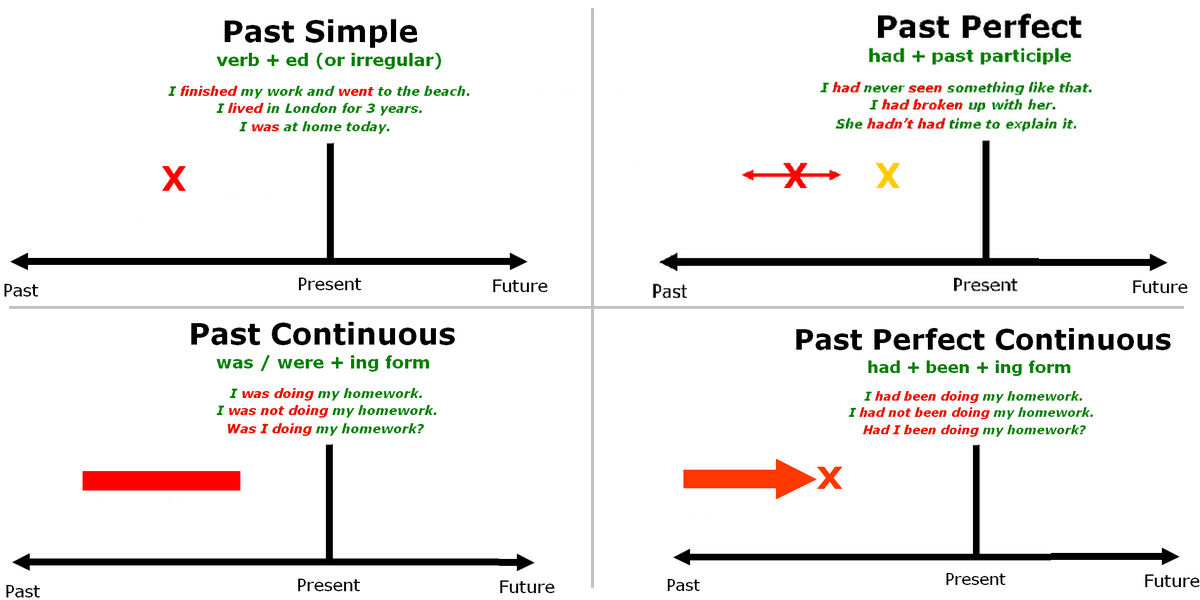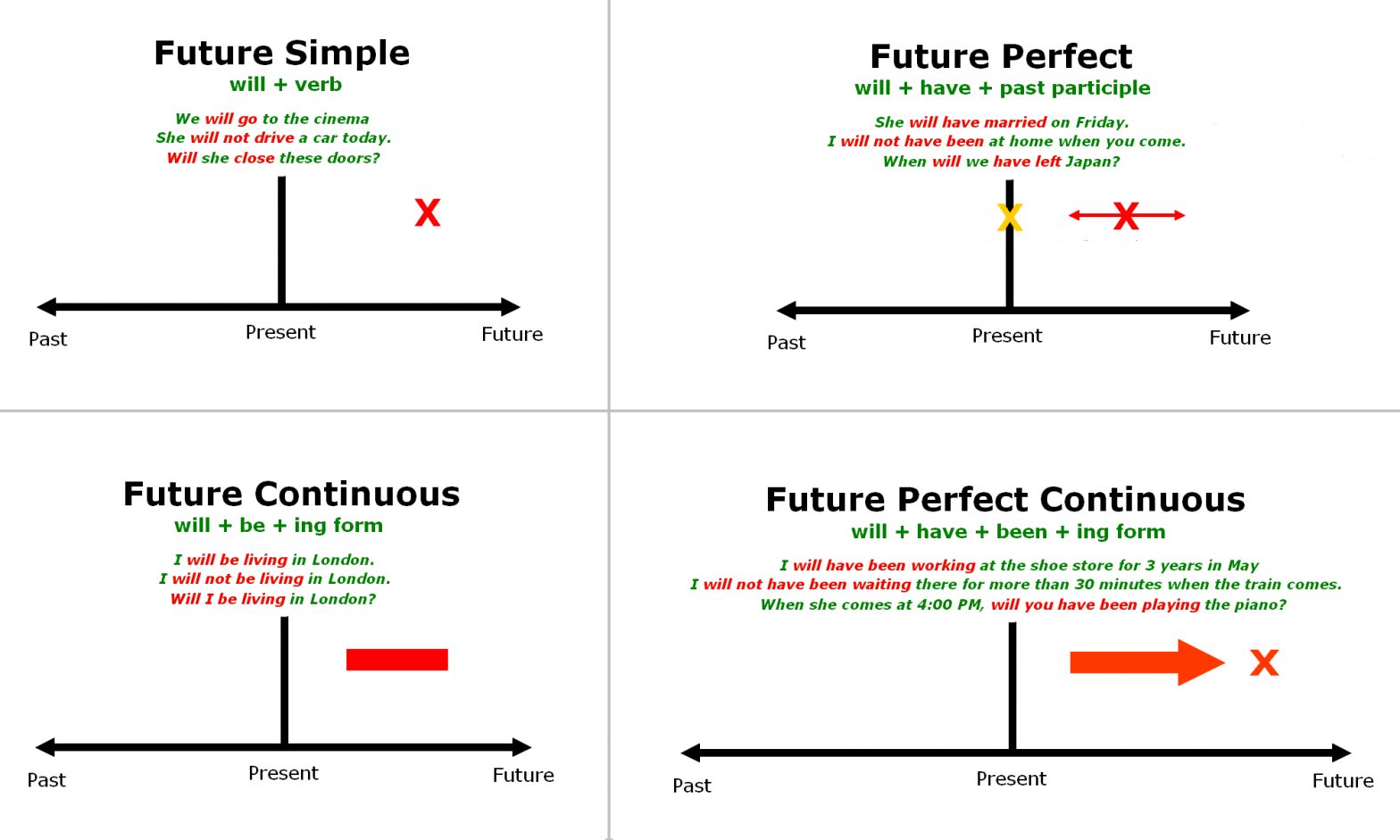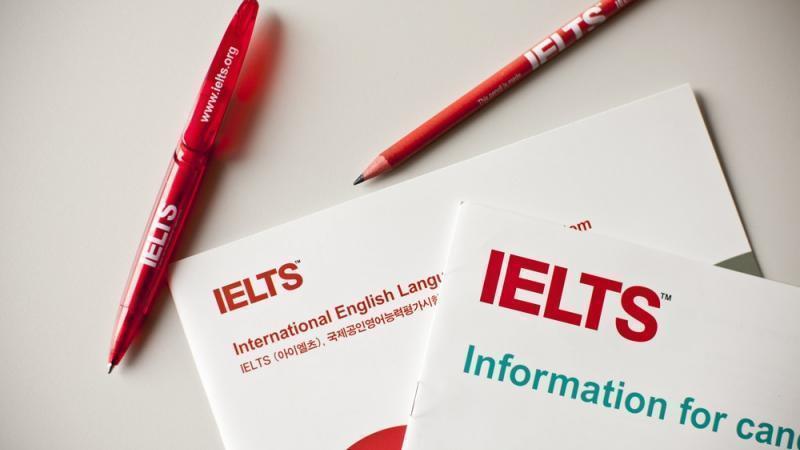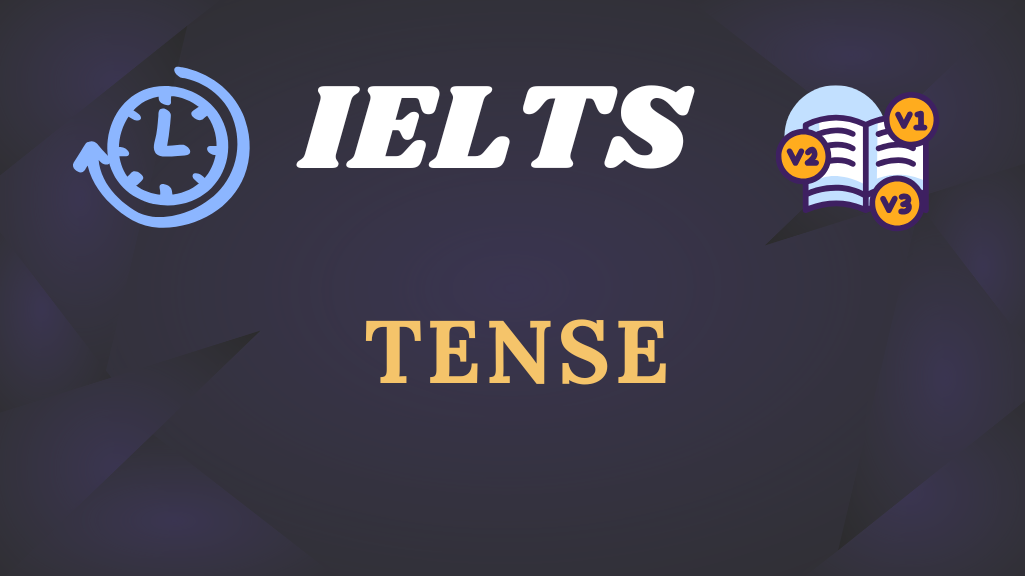If you’re preparing for the IELTS exam, mastering tenses is crucial. Whether you're writing an essay, describing a chart, or speaking about past experiences, using the correct tense helps you sound natural and grammatically accurate. But with so many tenses in English, it can be tricky to know when to use which one.
This guide breaks down everything you need to know about tenses for IELTS—how they work, where to use them, and common mistakes to avoid.
Why Are Tenses Important?
Tenses are the foundation of clear and effective communication in English. They help convey when an action happens—whether in the past, present, or future—ensuring that your message is grammatically correct and logically structured. Without proper tense usage, sentences can become confusing or even misleading.
Here’s why tenses are crucial in both spoken and written English:
1. Establishing Time Frames
Tenses help us express whether an action has already happened, is happening now, or will happen in the future.
Example:
- I finished my homework. (Past – action is completed)
- I am doing my homework. (Present – action is in progress)
- I will do my homework. (Future – action is yet to happen)
Without using the correct tense, the listener or reader won’t understand the time reference of the action.
2. Ensuring Clarity and Accuracy
Incorrect tenses can lead to unclear or misleading sentences.
Example:
She goes to the market yesterday. (Incorrect)
She went to the market yesterday. (Correct – Past Simple)
Using the wrong tense confuses the reader about when the action took place.
3. Essential for Storytelling and Descriptions
When telling a story or describing events, tense consistency is crucial. Jumping between tenses without reason can make a narrative confusing.
Example of a confusing sentence:
"I wake up early, then I went to the gym and now I drink coffee."
Revised for clarity:
"I woke up early, then I went to the gym, and now I am drinking coffee."
By maintaining a logical tense sequence, the sentence flows naturally and is easier to understand.

4. Making Predictions and Expressing Possibilities
Different tenses allow us to talk about future plans, expectations, and hypothetical situations.
Examples:
- I will visit my grandmother tomorrow. (Future Simple – definite plan)
- If I had more time, I would travel more. (Conditional – hypothetical)
Without tenses, expressing probability, planning, or imagination would become much harder.
5. Essential for Formal and Academic Writing
Tenses are critical in academic writing, business communication, and exams like IELTS, TOEFL, and GRE. They help structure:
- Research papers (Past tense for completed research, present for general truths)
- Job applications (Present tense for current skills, past for previous experience)
- News reports (Mix of past and present for recent events and general facts)
Example:
- Newton discovered gravity in 1687, and his laws still influence modern physics.
6. Expressing Cause-and-Effect Relationships
Some events happen before or after others, and tenses help show these relationships.
Example:
- By the time we arrived, the movie had already started. (Past Perfect – one action happened before another)
Without proper tense usage, it would be difficult to show which event happened first.
7. Improving Fluency in English
Mastering tenses allows you to speak and write fluently, making your English sound more natural.
- Mixing up tenses can cause hesitation in speech.
- Using the correct tense makes communication smooth and effortless.
Example of an unnatural sentence:
"I am going to the park yesterday." (Mix of present and past)
Natural version:
"I went to the park yesterday." (Past Simple)
The 12 English Tenses
Each tense has a specific function. Below is the structure and usage of each.
:max_bytes(150000):strip_icc()/Getty_tense-155096784-56af9f573df78cf772c6c6dd.jpg)
1. Past Tenses
A. Past Simple
The past simple tense describes actions that started and finished at a specific time in the past. It often comes with time markers like yesterday, last week, in 2010, two days ago.
- Usage: Used for past events that happened at a specific time.
| Type | Structure | Example |
|---|---|---|
| Affirmative | Subject + Verb (past) + Object | She studied English last year. |
| Negative | Subject + did not + Base verb + Object | They didn’t watch the match. |
| Question | Did + Subject + Base verb + Object? | Did you visit your parents last weekend? |
Exception: Does not use auxiliary verbs in positive sentences; irregular verbs don't follow a standard pattern (e.g., go → went, eat → ate).
B. Past Continuous
The past continuous tense describes an action that was in progress at a particular moment in the past. It often emphasizes duration or a background event.
- Usage: Used for interrupted actions or parallel actions in the past.
| Type | Structure | Example |
|---|---|---|
| Affirmative | Subject + was/were + Verb (-ing) + Object | I was reading when she called. |
| Negative | Subject + was/were not + Verb (-ing) + Object | They weren’t sleeping at midnight. |
| Question | Was/Were + Subject + Verb (-ing) + Object? | Was he playing football at 5 PM? |
Exception: Some stative verbs (e.g., "love," "know") are not used in continuous form.

C. Past Perfect
The past perfect is essential when telling a story or describing past experiences where the sequence of events matters.
- Usage: Used to show which action happened first.
| Type | Structure | Example |
|---|---|---|
| Affirmative | Subject + had + Past participle + Object | She had already left when I arrived. |
| Negative | Subject + had not + Past participle + Object | They hadn’t finished their work before the deadline. |
| Question | Had + Subject + Past participle + Object? | Had you eaten before the movie started? |
Exception: Not commonly used in spoken English unless necessary for clarity.
D. Past Perfect Continuous
The past perfect continuous is used to emphasize the duration of an action before a specific past event.
- Usage: Used for actions that continued for some time in the past before another action happened.
| Type | Structure | Example |
|---|---|---|
| Affirmative | Subject + had been + Verb (-ing) + Object | I had been studying for two hours before dinner. |
| Negative | Subject + had not been + Verb (-ing) + Object | They had not been waiting long. |
| Question | Had + Subject + been + Verb (-ing) + Object? | Had you been sleeping before the call? |
Exception: Not used with stative verbs.
2. Present Tenses
A. Present Simple
The present simple tense is mainly used to talk about things that happen regularly or facts that remain true over time.
- Usage: Used for routines, schedules, and universal truths.
| Type | Structure | Example |
|---|---|---|
| Affirmative | Subject + Verb (s/es) + Object | She plays tennis every weekend. |
| Negative | Subject + do/does not + Base verb + Object | He doesn’t like coffee. |
| Question | Do/Does + Subject + Base verb + Object? | Does she work here? |
Exception: The third-person singular (he/she/it) adds "-s" or "-es." Verbs like "have" change irregularly (he has instead of he haves).
B. Present Continuous
The present continuous is used when an action is happening at the moment of speaking or for future arrangements.
- Usage: Used for temporary actions and future arrangements.
| Type | Structure | Example |
|---|---|---|
| Affirmative | Subject + am/is/are + Verb (-ing) + Object | She is watching TV right now. |
| Negative | Subject + am/is/are not + Verb (-ing) + Object | They aren’t studying today. |
| Question | Am/Is/Are + Subject + Verb (-ing) + Object? | Are you listening to music? |
Exception: Stative verbs do not use "-ing."

C. Present Perfect
Describes an action that has been completed at the time of speaking. The present perfect tense connects past actions to the present.
- Usage: Used for actions that occurred at an unspecified time before now.
| Type | Structure | Example |
|---|---|---|
| Affirmative | Subject + has/have + Past participle + Object | She has finished her homework. |
| Negative | Subject + has/have not + Past participle + Object | They haven’t visited that place. |
| Question | Has/Have + Subject + Past participle + Object? | Have you ever been to Paris? |
Exception: It doesn’t specify when the action took place.
D. Present Perfect Continuous
Describes an ongoing action that started in the past and continues in the present. The present perfect continuous emphasizes the duration of an action.
- Usage: Used for actions that started in the past and are still continuing or have just finished.
| Type | Structure | Example |
|---|---|---|
| Affirmative | Subject + has/have been + Verb (-ing) + Object | She has been working all day. |
| Negative | Subject + has/have not been + Verb (-ing) + Object | They haven’t been studying. |
| Question | Has/Have + Subject + been + Verb (-ing) + Object? | Have you been waiting long? |
Exception: Not used with stative verbs.
3. Future Tenses
A. Future Simple
Describes actions that will happen in the future. Future simple is used for predictions or offers.
- Usage: Used for predictions, promises, and spontaneous decisions.
| Type | Structure | Example |
|---|---|---|
| Affirmative | Subject + will + Base verb + Object | I will call you tomorrow. |
| Negative | Subject + will not (won’t) + Base verb + Object | She won’t attend the meeting. |
| Question | Will + Subject + Base verb + Object? | Will you help me with this? |
Exception: "Will" is not usually used for planned actions (use "going to" instead).
B. Future Continuous
Describes an ongoing action that will happen in the future. Future continuous emphasizes actions that will be happening at a specific future time.
- Usage: Used for actions that will be in progress at a specific time in the future.
| Type | Structure | Example |
|---|---|---|
| Affirmative | Subject + will be + Verb (-ing) + Object | I will be traveling at 10 AM. |
| Negative | Subject + will not be + Verb (-ing) + Object | She won’t be studying at that time. |
| Question | Will + Subject + be + Verb (-ing) + Object? | Will you be working tomorrow? |
Exception: Not used with stative verbs.

C. Future Perfect
Describes an action that will be completed before a certain point in the future. Future perfect shows an action that will be finished before a future moment.
- Usage: Used to express that something will be finished before a specific time.
| Type | Structure | Example |
|---|---|---|
| Affirmative | Subject + will have + Past participle + Object | By 10 AM, I will have finished my work. |
| Negative | Subject + will not have + Past participle + Object | They won’t have completed the project by next week. |
| Question | Will + Subject + have + Past participle + Object? | Will you have left by the time I arrive? |
Exception: Often used with time expressions like "by then" or "by the time."
D. Future Perfect Continuous
Describes a long action that will continue until a specific future time. The future perfect continuous highlights the duration of an action that will continue until a specific time.
- Usage: Used to emphasize the duration of an action that will be in progress at a future moment.
| Type | Structure | Example |
|---|---|---|
| Affirmative | Subject + will have been + Verb (-ing) + Object | By 2025, I will have been working here for 10 years. |
| Negative | Subject + will not have been + Verb (-ing) + Object | She won’t have been studying for long when you arrive. |
| Question | Will + Subject + have been + Verb (-ing) + Object? | Will you have been waiting long by the time I get there? |
Common Tense Mistakes
Even advanced learners make mistakes with tenses. Below are some of the most common errors and their corrections.
Incorrect: I have finished my essay yesterday.
- Correct: I finished my essay yesterday. (Past Simple is needed because "yesterday" is a specific time.)
Incorrect: I will go to the library tomorrow at 5 PM.
- Correct: I am going to the library tomorrow at 5 PM. (Present Continuous is better for planned future actions.)
Incorrect: After I eat breakfast, I left for school.
- Correct: After I had eaten breakfast, I left for school. (Past Perfect shows the correct sequence of events.)
How to Choose the Right Tense
Look for time indicators
- Specific time in the past (e.g., last year, in 2020) → Use Past Simple.
- Connection to the present (e.g., since 2010, already) → Use Present Perfect.
- Future actions (e.g., next year, by 2030) → Use a Future tense.
Think about whether the action is finished or ongoing
- Finished past actions? → Use Past Simple.
- Still happening? → Use Present Perfect or Present Continuous.
Use a mix of tenses to show range
- In Writing Task 2, using different tenses improves clarity.
- In Speaking, mixing tenses makes speech more fluent.

Why Are Tenses Important in IELTS?
Tenses play a crucial role in the IELTS exam, as they help convey clear, logical, and grammatically correct responses. Whether you're writing an essay or speaking about past experiences, using the correct tense ensures that your ideas are well-structured and easy to understand.
Here’s why tenses are essential in IELTS:
1. Accuracy and Grammar Score
- IELTS assesses your grammatical range and accuracy in both Writing and Speaking.
- Incorrect use of tenses leads to grammatical errors, which can lower your band score.
Example:
❌ I have taken the IELTS exam last year. (Incorrect)
✅ I took the IELTS exam last year. (Correct – Past Simple)
2. Clarity in Communication
- Using the right tense makes your ideas clear and logical.
- Incorrect tenses can confuse the examiner and make your response hard to follow.
Example:
❌ I am going to study in Canada since 2020. (Confusing)
✅ I have been studying in Canada since 2020. (Correct – Present Perfect Continuous)
3. Different IELTS Sections Require Different Tenses
Each part of the IELTS exam requires specific tense usage.
A. Writing Task 1 (Graphs, Charts, and Maps)
- Describing past trends: The population increased in 2010. (Past Simple)
- Describing current trends: The number of students is rising. (Present Continuous)
- Making predictions: The economy will grow by 5% next year. (Future Simple)
B. Writing Task 2 (Essay Writing)
- General facts and opinions: Online education is becoming popular. (Present Simple)
- Hypothetical situations: If the government invested more in education, literacy rates would rise. (Second Conditional – Past + Would)
C. Speaking Part 1 (Personal Questions)
- Talking about habits and routines: I wake up early every day. (Present Simple)
- Talking about ongoing situations: I am preparing for IELTS now. (Present Continuous)
D. Speaking Part 2 (Long Turn - Storytelling and Experiences)
- Describing past events: Last year, I traveled to Japan. (Past Simple)
- Giving background information: While I was studying, my friend called me. (Past Continuous)
E. Speaking Part 3 (Discussion - Comparing Past, Present, and Future)
- Comparing past and present: In the past, people relied on newspapers, but now, they use digital media. (Past Simple & Present Simple)
- Speculating about the future: In the next ten years, technology will become even more advanced. (Future Simple)
4. Expressing Time Relationships Correctly
Some ideas require multiple tenses to show relationships between actions.
Example:
❌ By the time I arrive, the class started. (Incorrect)
✅ By the time I arrive, the class will have started. (Correct – Future Perfect)
5. Showing a Wide Range of Grammar for a Higher Score
- To score Band 7 or higher, you need to show a variety of tenses in your speaking and writing.
- Using only basic tenses (Present Simple, Past Simple) makes your response sound limited.
Example (Band 5–6 Response):
"I study English. I want to pass IELTS. I go to classes every day." (Only Present Simple)
Example (Band 7–8 Response):
"I have been studying English for the past two years because I want to pass IELTS. If I score well, I will apply for a university abroad." (Present Perfect Continuous, Present Simple, Future Simple)
